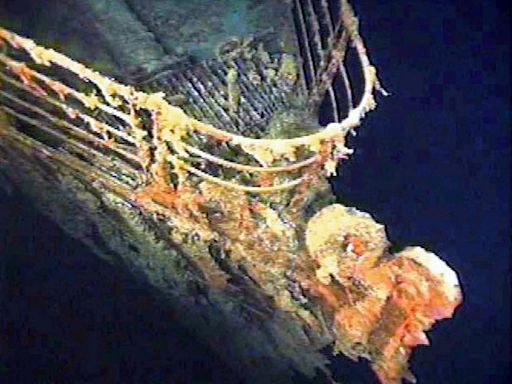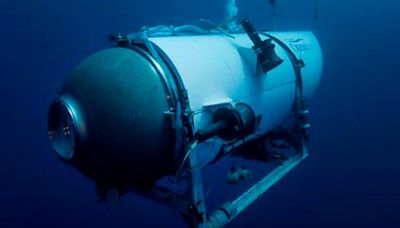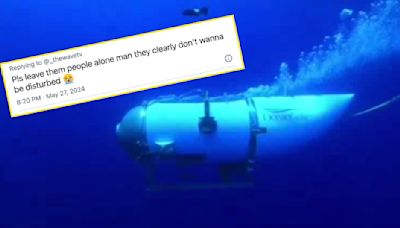Search results
People also ask
When did RMS Titanic sank?
What happened on Titanic SS Birma?
Who survived Titanic & HMHS Britannic?
Who discovered the wreck of Titanic?
RMS Titanic was a British ocean liner that sank on 15 April 1912 as a result of striking an iceberg on her maiden voyage from Southampton, England to New York City, United States. Of the estimated 2,224 passengers and crew aboard, approximately 1,500 died, making the incident the deadliest sinking of a single ship at the time.
RMS Titanic sank on 15 April 1912 in the North Atlantic Ocean. The largest ocean liner in service at the time, Titanic was four days into her maiden voyage from Southampton to New York City, with an estimated 2,224 people on board when she struck an iceberg at 23:40 (ship's time) on 14 April.
- The Building of The RMS Titanic
- ‘Unsinkable’ Titanic’s Fatal Flaws
- Passengers on The Titanic
- Titanic Sets Sail
- The Titanic Strikes An Iceberg
- Titanic’s Lifeboats
- Titanic Sinks
- Aftermath of The Titanic Catastrophe
- Titanic Wreck
The Titanic was the product of intense competition among rival shipping lines in the first half of the 20th century. In particular, the White Star Line found itself in a battle for steamship primacy with Cunard, a venerable British firm with two standout ships that ranked among the most sophisticated and luxurious of their time. Cunard’s Mauretania...
According to some hypotheses, Titanic was doomed from the start by a design that many lauded as state-of-the-art. The Olympic-class ships featured a double bottom and 15 watertight bulkhead compartments equipped with electric watertight doors that could be operated individually or simultaneously by a switch on the bridge. It was these watertight bu...
Titanic created quite a stir when it departed for its maiden voyage from Southampton, England, on April 10, 1912. After stops in Cherbourg, France, and Queenstown (now known as Cobh), Ireland, the ship set sail for New Yorkwith 2,240 passengers and crew—or “souls,” the expression then used in the shipping industry, usually in connection with a sink...
Titanic’s departure from Southampton on April 10 was not without some oddities. A small coal fire was discovered in one of her bunkers–an alarming but not uncommon occurrence on steamships of the day. Stokers hosed down the smoldering coal and shoveled it aside to reach the base of the blaze. After assessing the situation, the captain and chief eng...
On April 14, after four days of uneventful sailing, Titanic received sporadic reports of ice from other ships, but she was sailing on calm seas under a moonless, clear sky. At about 11:30 p.m., a lookout saw an iceberg coming out of a slight haze dead ahead, then rang the warning bell and telephoned the bridge. The engines were quickly reversed and...
A little more than an hour after contact with the iceberg, a largely disorganized and haphazard evacuation began with the lowering of the first lifeboat. The craft was designed to hold 65 people; it left with only 28 aboard. Tragically, this was to be the norm: During the confusion and chaos during the precious hours before Titanic plunged into the...
The ship’s most illustrious passengers each responded to the circumstances with conduct that has become an integral part of the Titanic legend. Ismay, the White Star managing director, helped load some of the boats and later stepped onto a collapsible as it was being lowered. Although no women or children were in the vicinity when he abandoned ship...
At least five separate boards of inquiry on both sides of the Atlantic conducted comprehensive hearings on Titanic’s sinking, interviewing dozens of witnesses and consulting with many maritime experts. Every conceivable subject was investigated, from the conduct of the officers and crew to the construction of the ship. Titanic conspiracy theoriesab...
Efforts to locate the wreck of Titanic began soon after it sank. But technical limitations—as well as the vastness of the North Atlantic search area—made finding it extremely difficult. Finally, in 1985, a joint U.S.-French expedition located the wreck of the RMS Titanic. The doomed ship was discovered about 400 miles east of Newfoundland in the No...
On April 10, 1912, the RMS Titanic embarked on its maiden voyage, sailing from Southampton, England, to New York City. Four days later the luxury liner struck an iceberg, and early the next day it sank, killing some 1,500 people. The tragedy captured the world’s imagination and made the Titanic an enduring legend. Timeline.
May 19, 2021 · The RMS Titanic was a White Star Line ocean liner, which sank after hitting an iceberg on its maiden voyage from Southampton to New York on 15 April 1912. Over 1,500 men, women, and children lost their lives. There were 705 survivors. In 1985, the Titanic wreck was found several miles deep on the Atlantic seafloor by Robert D. Ballard.
Aug 20, 2021 · Updated March 12, 2024. Discover the most fascinating facts and stories about the sinking of the RMS Titanic on April 15, 1912, from how it happened to how many people died. When the RMS Titanic first set sail, countless people cheered for the “unsinkable” ship.





